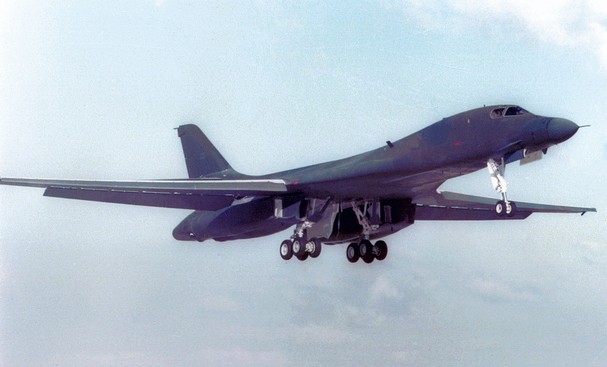
17 September 1976. Enterprise (OV-101), the prototype Space Shuttle Orbital Vehicle, was rolled out at the Rockwell International plant at Palmdale, California.
© 2016, Bryan R. Swopes

7 July 1985: The Strategic Air Command received the first operational Rockwell B-1B Lancer, serial number 83-0065, Star of Abilene, at Dyess Air Force Base, Abilene, Texas. It flew for 17 years, 7 months, 23 days before being retired 1 March 2003 and preserved at Dyess.

The B-1B is powered by four General Electric F101-GE-102 afterburning turbofan engines. This is an axial-flow engine with a 2-stage fan section, 9-stage compressor and 3-stage turbine (1 high- and 2 low-pressure stages). It is rated at 17,390 pounds of thrust (77.35 kilonewtons), and 30,780 pounds of thrust (136.92 kilonewtons) with afterburner. The F101-GE-102 is 15 feet, 0.7 inches (4.590 meters) long, 4 feet, 7.2 inches (1.402 meters) in diameter, and weighs 4,460 pounds (2,023 kilograms).

The B-1B has a maximum speed of Mach 1.25 (830 miles per hour (1,336 kilometers per hour) at high altitude, or 0.92 Mach (700 miles per hour, 1,127 kilometers per hour) at 200 feet (61 meters). The Lancer has a service ceiling of 60,000 feet (18,288 meters), and an unrefueled range of 7,456 miles (11,999 kilometers).
It can carry up to 84 Mk.82 500-pound bombs, 24 Mk.84 2,000-pound bombs, or other weapons.
100 B-1B Lancers were built by Rockwell International’s aircraft division at Air Force Plant 42, Palmdale, California, between 1983 and 1988. As of February 2018, 62 B-1B bombers are in the active Air Force inventory.

© 2018, Bryan R. Swopes